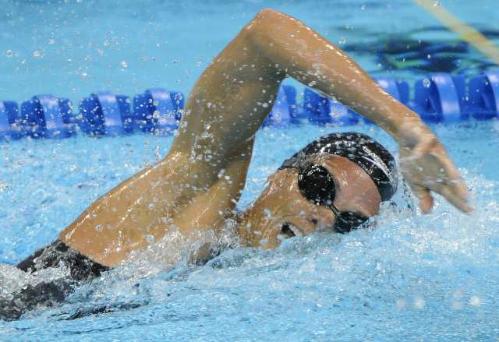Swimmer’s Shoulder and ART
 In the summer months, many of us take advantage of the benefits of water-based exercise. Not only is swimming an excellent aerobic activity, it can also decrease the symptoms of chronic illnesses such as arthritis and fibromyalgia and improve overall mood. While swimming is easier on the joints and muscles compared to many other types of exercise, it can also cause a painful condition called swimmer’s shoulder.
In the summer months, many of us take advantage of the benefits of water-based exercise. Not only is swimming an excellent aerobic activity, it can also decrease the symptoms of chronic illnesses such as arthritis and fibromyalgia and improve overall mood. While swimming is easier on the joints and muscles compared to many other types of exercise, it can also cause a painful condition called swimmer’s shoulder.
A repetitive injury, swimmer’s shoulder is typically caused by faulty stroke mechanics, sudden increases in training or workout intensity, or improper use of training devices such as hand paddles. Lax shoulder joints and scar tissue between muscles can also lead to this painful condition.
It’s no surprise that shoulder pain is one of the most common musculoskeletal complaints. When you consider that the shoulder is only anchored by muscles, tendons, and ligaments while providing a tremendous range of motion, it’s easy to see how injury is possible. In the case of swimmer’s shoulder, the muscles and tendons that surround the shoulder joint weaken and become tender and painful.
One proven treatment for swimmer’s shoulder is Active Release Technique (ART). This patented, innovative massage technique helps both professional athletes and everyday people who are suffering from painful soft tissue conditions such as swimmer’s shoulder. Without the need for injections, surgery, or medication, ART has become the gold standard in soft tissue treatment and the solution for many who want effective relief from painful joints and muscles.
How ART Works
ART is not one technique, but rather consists of 500 treatment “protocols” that treat muscles, tendons, ligaments, nerves, and fascia. Many soft tissue-related conditions including back pain, carpel tunnel syndrome, shin splints, sciatica, plantar fasciitis, knee pain, and even swimmer’s shoulder can be effectively treated with ART.
Every ART session consists of both an exam and treatment. The ART provider is trained to evaluate and treat soft tissue with a combination of directed tension and specific patient movements. This specialized approach to treating conditions such as swimmer’s shoulder is effective in more than 90% of patients.
If you are suffering from swimmer’s shoulder or any other soft tissue condition or injury and are considering ART, it’s important to consult with a certified ART health care provider. Because of the complexity of this treatment, you will definitely want someone who is knowledgeable in the vast range of protocols and who has the ability to evaluate the texture, tightness, and movement of your muscles. To learn more about ART or to receive an evaluation of your swimmer’s shoulder or other soft tissue condition, make an appointment today.
Tags: ART, muscle pain, shoulder injury, soft tissue injury, swimmers shoulder






